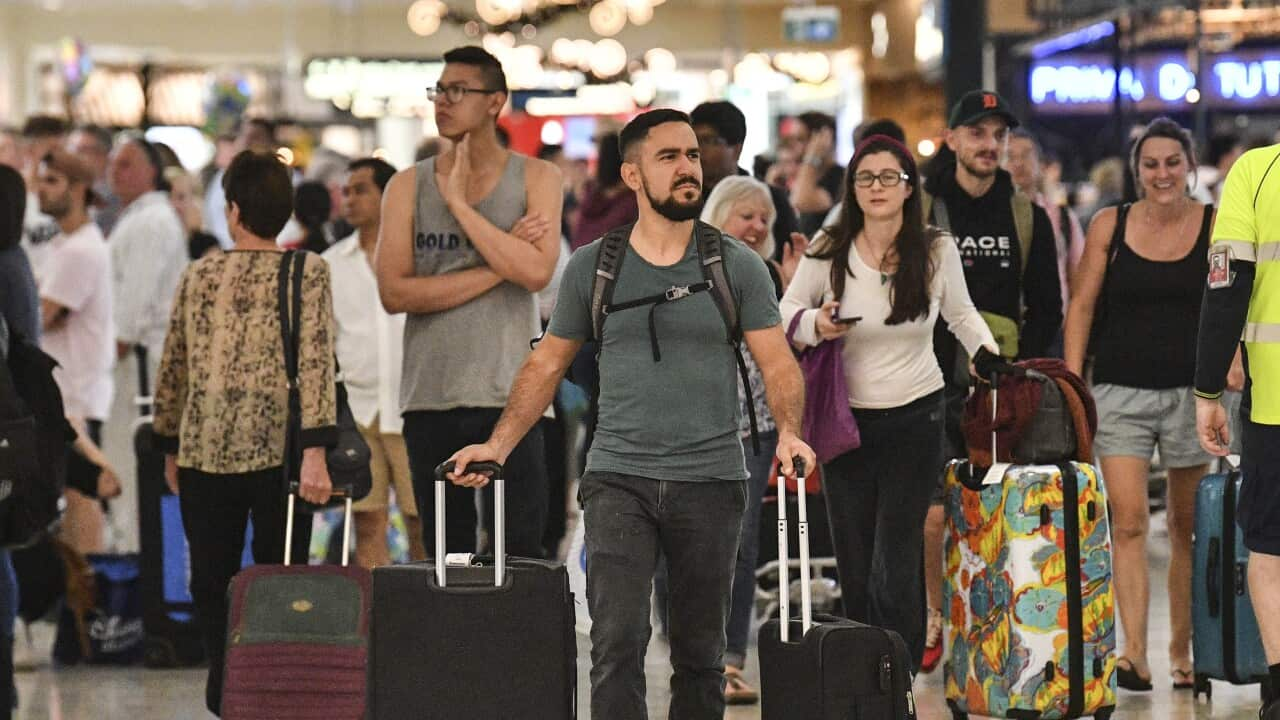Key Points
- A piece of fuselage tore off the left side of the jet operated by Alaska Airlines as it climbed following takeoff from Portland, Oregon.
- The plane landed safely with 174 passengers and six crew members.
- Boeing said it supports the decision requiring immediate inspections of 737-9 airplanes "with the same configuration as the affected airplane."
The top US aviation regulator ordered the temporary grounding of certain Boeing 737 Max 9 aircraft for safety checks following a cabin panel blowout that forced a brand-new airplane operated by Alaska Airlines to make an emergency landing.
A piece of fuselage tore off the left side of the jet operated by Alaska Airlines as it climbed following takeoff from Portland, Oregon, en route to Ontario, California, forcing pilots to turn back and land safely with all 171 passengers and six crew on board. The plane had been in service for just eight weeks.
The FAA's decision falls well short of a full indefinite safety ban comparable to the grounding of all Max-family jets almost five years ago, but it deals a new blow to Boeing as it tries to recover from back-to-back crises over safety and the pandemic under massive debts.
"The FAA is requiring immediate inspections of certain Boeing 737 Max 9 planes before they can return to flight," Federal Aviation Administration chief Mike Whitaker said on Saturday. "Safety will continue to drive our decision-making as we assist the NTSB’s investigation into Alaska Airlines Flight 1282," he added, referring to the National Transport Safety Board.
Boeing said it supports the decision requiring immediate inspections of 737-9 airplanes "with the same configuration as the affected airplane." The directive covers 171 planes.
Alaska Airlines earlier Saturday voluntarily grounded its fleet of 65 Boeing Max 9 jets for safety checks. As of Saturday morning, Alaska said more than a quarter of the inspections had been completed with no new issues, and those jets were resuming flights. It did not respond to a request for further comment.
United Airlines said it had temporarily suspended service on about 45 Boeing 737 Max 9 airplanes to conduct inspections. United has 79 of the aircraft, and it said 33 have already received required inspections. It expects about 60 United cancellations on Saturday.
Alaska and United are the only US airlines currently using the Max 9, according to aviation data provider Cirium.
Australia's air regulator, the Civil Aviation Safety Authority, said there are currently no Boeing 737 Max 9s flown by any airlines in Australia.
CASA said at this stage it had no further comment.
Boeing's best-selling model was grounded for almost two years following crashes in 2018 and 2019. The latest mishap also comes as Boeing and a major supplier are grappling with a succession of production or quality problems.
There were no immediate indications of the cause of the apparent structural failure, and no reports of any injuries.
According to tracking site FlightRadar24, Alaska Airlines had 108 cancellations on Saturday, or 14 per cent of its scheduled flights.
The National Transportation Safety Board said a team of experts in structures, operations and systems would arrive on the scene later on Saturday to begin an investigation.
Boeing said it was working to gather more information and was in contact with the airline.
Flight 1282 had reached just over 16,000 feet when the blowout happened, according to FlightRadar24. "We'd like to get down," the pilot told air traffic control, according to a recording posted on liveatc.net.
"We are declaring an emergency. We do need to come down to 10,000," the pilot added, referring to the initial staging altitude for such emergencies, below which breathing is considered possible for healthy people without extra oxygen.
Social media posts showed oxygen masks deployed and a portion of the aircraft's side wall missing. Passenger photos appeared to show that a section of the fuselage sometimes used for an optional rear mid-cabin exit door had vanished, leaving a neat door-shaped gap.
Emma Vu, a passenger on the Alaska flight, told CNN she awoke to the plane “just falling, and I knew it was not just normal turbulence because the masks came down and that’s when the panic definitely started to set in.”
The extra door is typically installed by low-cost airlines using extra seats that require more paths for evacuation. However, those doors are permanently "plugged," or deactivated, on jets with fewer seats, including those of Alaska Airlines.
"I can't imagine what these passengers experienced," said Anthony Brickhouse, an air safety expert at Embry-Riddle Aeronautical University. "The wind would be rushing through that cabin. It was a probably pretty violent situation, and definitely a scary situation."
The 737 Max was grounded for 20 months worldwide after two fatal crashes in 2018 and 2019 linked to poorly designed cockpit software killed 346 people in Ethiopia and Indonesia. Boeing is awaiting certification of its smaller Max7 and larger Max 10.
Bloomberg News reported that China's aviation regulator was considering a response to the Alaska Air incident, including a possible new grounding of the Boeing MAX fleet in the country.
Last week, Boeing said it was urging airlines to inspect all 737 Max airplanes for a possible loose bolt in the rudder control system.
The fuselage for Boeing 737 planes, its most popular model, is made by Kansas-based Spirit AeroSystems, which separated from Boeing in 2005.
It was not immediately clear whether the door "plug" used to replace the door when not selected by airlines is also made by Spirit, nor whether the Alaska incident was related to factory processes or design. Spirit referred questions on the Alaska incident to Boeing.










